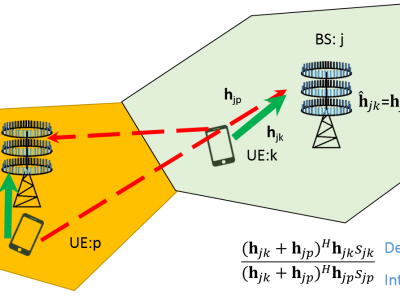Documents
Poster
Pilot Contamination in Massive MIMO: A Measurement-based Analysis using 2D-MUSIC

- Citation Author(s):
- Submitted by:
- Cheng-Ming Chen
- Last updated:
- 20 June 2018 - 8:34am
- Document Type:
- Poster
- Document Year:
- 2018
- Event:
- Presenters:
- Cheng-Ming Chen
- Paper Code:
- 1570439757
- Categories:
- Log in to post comments
When a base station (BS) sees desired and interfering
users at different angles, it results in non-overlapping angleof-
arrival (AoA) regions for those users. This is important for
reducing pilot contamination (PC) of massive MIMO systems.
Most state of the art studies utilize a simple non-line-of-sight
(NLoS) one-ring model which assumes sparse support and can
reasonably schedule users with different AoA to minimize PC.
However, it is not confirmed with measurements that the one-ring
model is accurate to characterize the real performance of PC.
In this paper, we aim to validate these assumptions by analyzing
channel measurements for an NLoS indoor to outdoor massive
MIMO channel. Our results show a significant overlap in AoA
when users and BS are separated by a wall. First, we analyze
how the AoAs depend on the user locations by transforming
the measured channels to the angular domain. Then, we analyze
the dependency of AoA overlap of two users and the impact on
PC, and our results show that there is a very high correlation.
This finding indicates that angular information is useful in pilot
scheduling to reduce PC. To be precise, instead of employing a
virtual antenna array, a channel measurement from a 64-antenna
rectangular array operated at 2.6GHz in the BS is considered.
Furthermore, two deployment topologies for the BS array are
considered, namely, collocated and distributed sub-arrays are
included for quantifying the benefits from improved channel
diversity when distributing the arrays.

